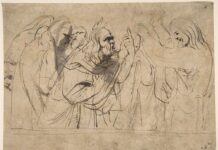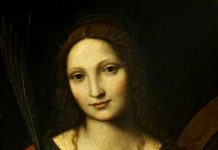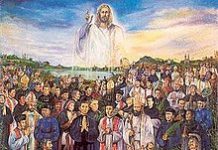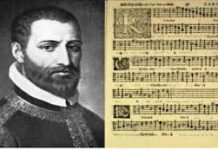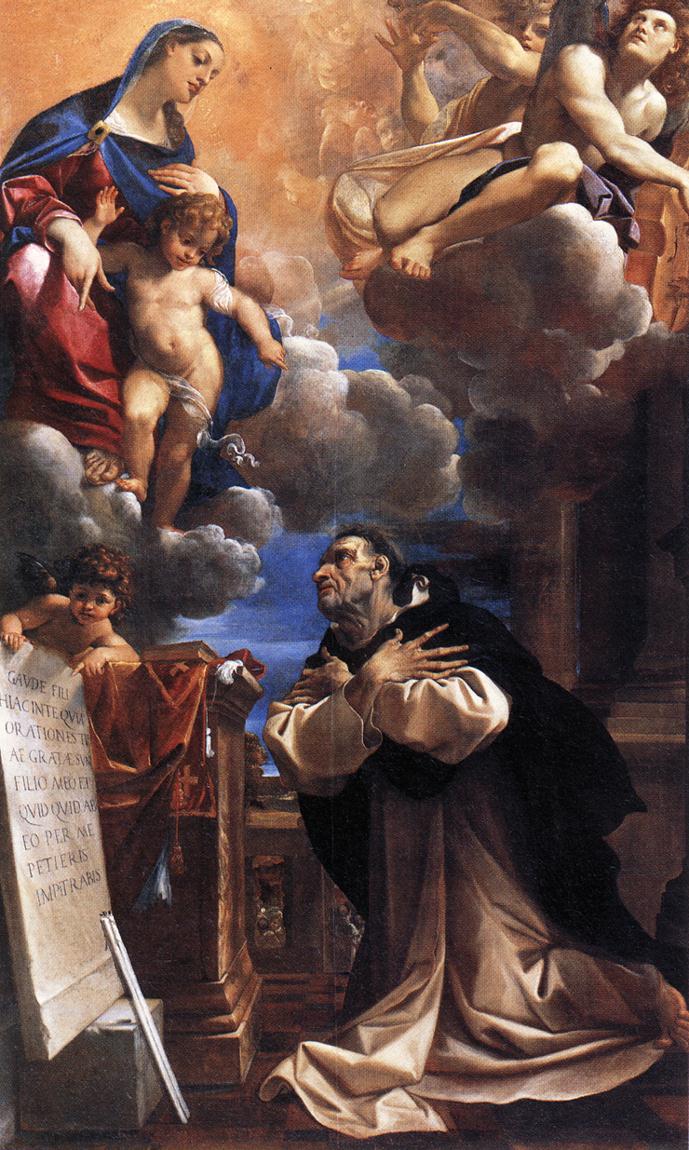
Saint Hyacinth (1185 – 1257) was one of the earliest members of the Dominicans – the Order of Preachers – clothed in the habit by the founder himself in 1220. The Polish nobleman followed the path to the priesthood, mentored by his uncle, Ivo Konski, the Bishop of Krakow, but was prompted to join the radical new Order of mendicants when he witnessed a miracle by of its members. He was stationed in Rome, setting up the Order in Rome, and one of the first to graduate from the ratio studiorum in the church of Santa Sabina, that would later develop into the Pontifical University of Saint Thomas Aquinas (himself a nobleman, who would join the Order in 1244). Brother Hyacinth was eventually sent back to his homeland, to set up the Dominicans there, and he evangelized throughout Europe, legends abounding, until his death in 1257.
In 1240, during the Siege of Kiev by the Mongols, Hyacinth went into a church to rescue the Blessed Sacrament in the ciborium. The statue of Our Lady told him to take her as well, which he did under obedience, quite easily, even though the statue was far heavier than he could lift; but lift it he did, making him the patron saint of, yes, weightlifters. Earlier, in 1238, during a visit to Kościelec in southern Poland, the crops were destroyed by hail, which Brother Hyacinth restored by prayer. The people fed him with perogies made from the crops in gratitude. Perhaps also in gratitude for that gratitude, Hyacinth during a second siege in 1241, fed the people miraculously with ever-multiplying perogies during a famine, which gives me a bit of a hankering for some.
Saint Hyacinth was canonized by Pope Clement VIII in 1594, and his feast kept on this August 17th, close to the day of his death, fittingly, two days earlier on the Solemnity of the Assumption, in 1257.
Saint Hyacinth, ora pro nobis! +
(Source, in partibus, Wikipedia.org)

